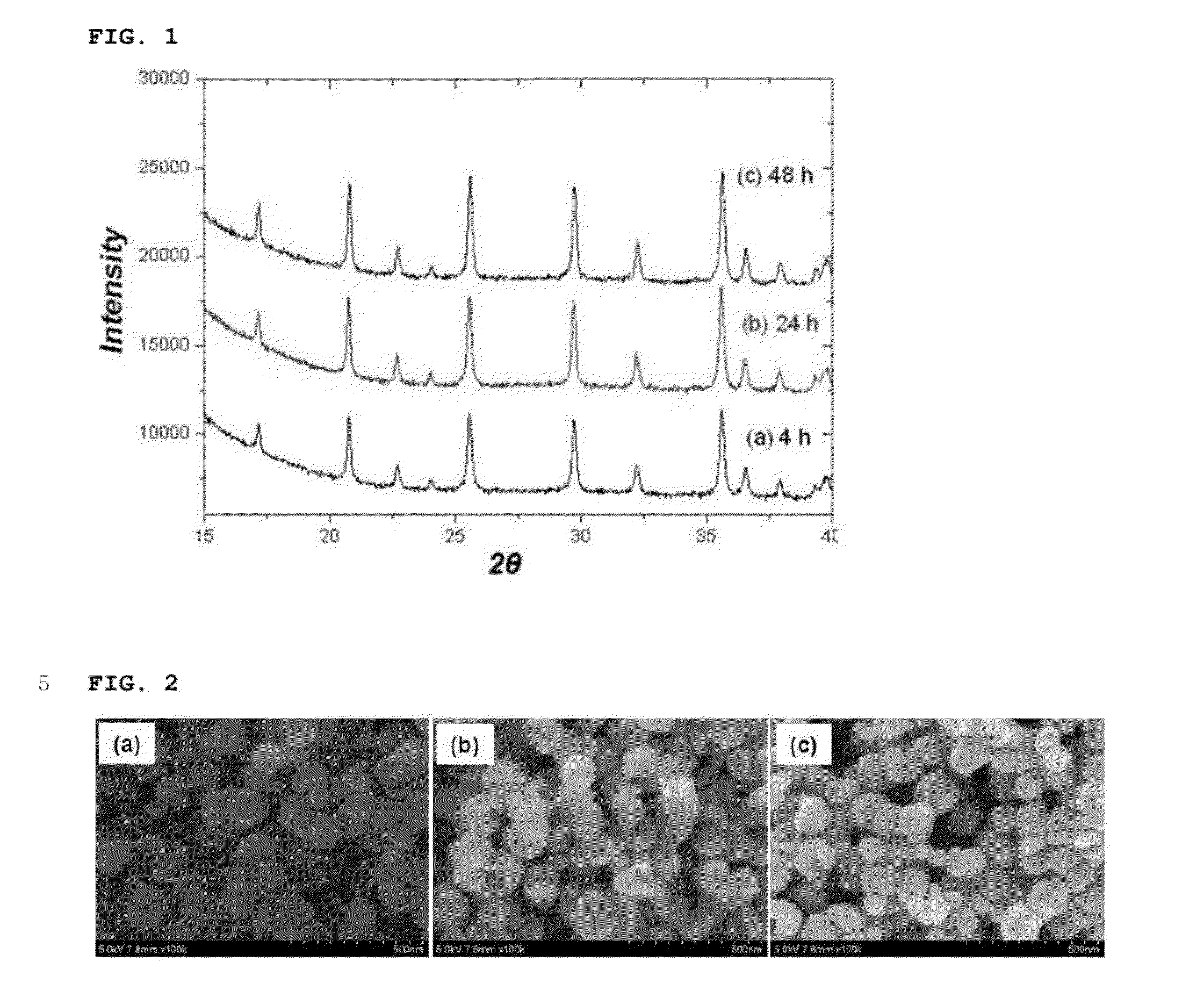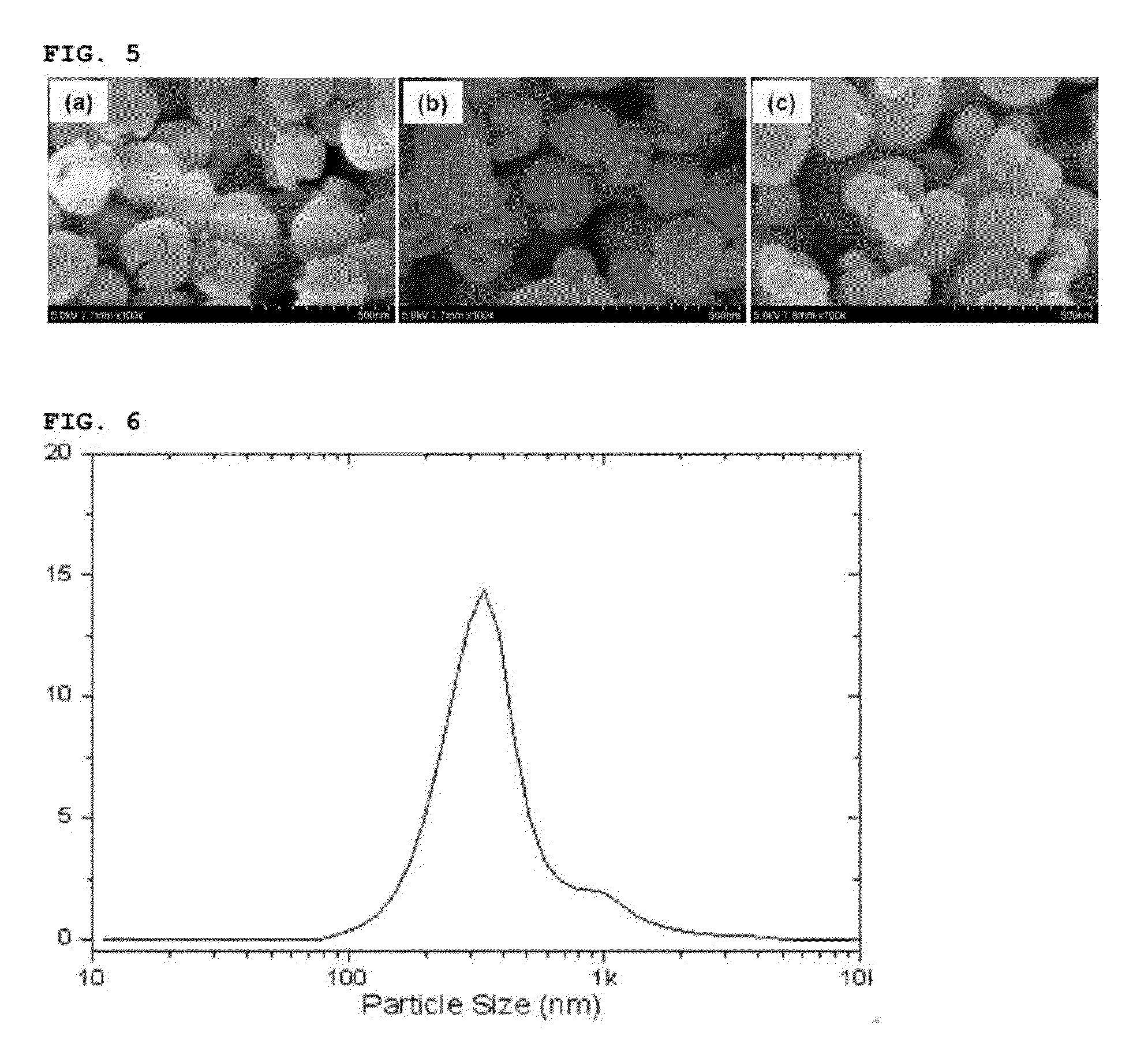Method for preparing lithium iron phosphate nanopowder
a lithium iron phosphate and nanopowder technology, applied in the field of lithium iron phosphate nanopowder, can solve the problems of difficult mass production of lithium secondary batteries including thereof, affecting the safety affecting the quality of lithium secondary batteries, etc., and achieves good capacity and stability, process safety and economic feasibility.
- Summary
- Abstract
- Description
- Claims
- Application Information
AI Technical Summary
Benefits of technology
Problems solved by technology
Method used
Image
Examples
examples
[0087]Exemplary embodiments of the invention will be described below in more detail. The present invention may, however, be embodied in different forms and should not be construed as limited to the embodiments set forth herein. Rather, these embodiments are provided so that this disclosure will be thorough and complete, and will fully convey the scope of the inventive concept to those skilled in the art.
examples 1a , 1b and 1c
Examples 1a, 1b and 1c
[0088]1.44 g of lithium hydroxide (LiOH), 14.7 g of ferric citrate (FeC6H5O7) and 5.88 g of phosphoric acid (H3PO4) were added in 300 ml of glycerol and sufficiently stirred to prepare a mixture solution.
[0089]The sufficiently stirred mixture solution was put into a 500 ml reactor and a reaction was respectively performed at 260° C. for 4 hours (Example 1a), for 24 hours (Example 1b) and for 48 hours (Example 1c).
[0090]After finishing the reaction, the remaining reactant was cooled and washed sequentially using acetone and methanol.
[0091]After washing, the product was dried using a vacuum drier.
[0092]After finishing the washing and drying, the reaction product thus obtained was analyzed with an X-ray diffraction spectroscopy and a scanning electron microscope. The reaction product was confirmed to be a lithium iron phosphate nanopowder having a particle size of about 120 nm and having a pure olivine crystal structure (See FIGS. 1 and 2).
[0093]In addition, the p...
examples 2a , 2b and 2c
Examples 2a, 2b and 2c
[0094]2.529 g of lithium hydroxide hydrate (LiOH.H2O), 14.6964 g of ferric citrate hydrate (FeC6H5O7.nH2O) and 5.88 g of phosphoric acid (H3PO4) were added in 300 ml of glycerol and sufficiently stirred to prepare a mixture solution.
[0095]The sufficiently stirred mixture solution was put into a 500 ml reactor and a reaction was performed at 260° C. for 4 hours (Example 2a), for 24 hours (Example 2b) and for 72 hours (Example 2c).
[0096]After finishing the reaction, the remaining reactant was cooled and washed sequentially using acetone and methanol. After washing, the product was dried using a vacuum drier.
[0097]After finishing the washing and drying, the reaction product thus obtained was analyzed with an X-ray diffraction spectroscopy and a scanning electron microscope. The reaction product was confirmed to be a lithium iron phosphate nanopowder having a particle size of about 200 nm of a pure olivine crystal structure (See FIGS. 4 and 5).
[0098]A graph obtaine...
PUM
| Property | Measurement | Unit |
|---|---|---|
| pressure | aaaaa | aaaaa |
| temperature | aaaaa | aaaaa |
| temperature | aaaaa | aaaaa |
Abstract
Description
Claims
Application Information
 Login to View More
Login to View More - R&D
- Intellectual Property
- Life Sciences
- Materials
- Tech Scout
- Unparalleled Data Quality
- Higher Quality Content
- 60% Fewer Hallucinations
Browse by: Latest US Patents, China's latest patents, Technical Efficacy Thesaurus, Application Domain, Technology Topic, Popular Technical Reports.
© 2025 PatSnap. All rights reserved.Legal|Privacy policy|Modern Slavery Act Transparency Statement|Sitemap|About US| Contact US: help@patsnap.com



